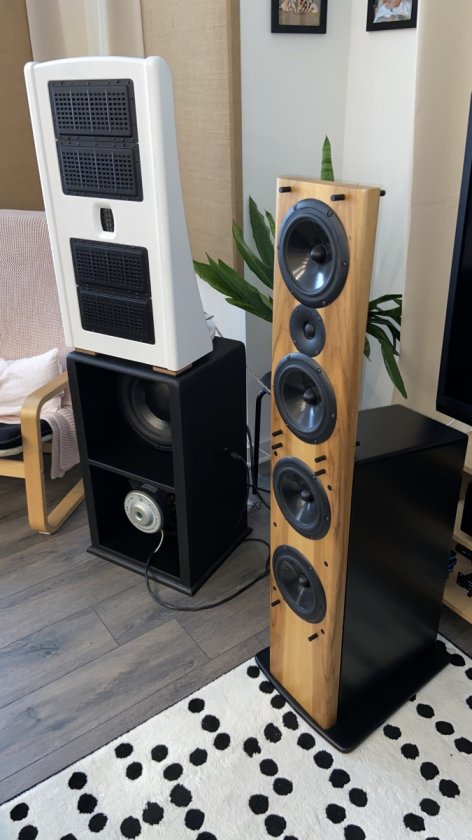We don't want a tweeter in front of the LM10s, and the LT2 is too small for a line source and would be too far away from the next tweeter to be useful in a line array design, comb filtering would be an issue, hence why we're considering the LT6s so we don't need 16 tweeters in a line.
A better idea would be a pair of LM10 in a square arrangement, with an LT2/LT3 between the two, limiting any overlap of the drivers.
Or 2 pairs with the tweeter in between in an MMTMM configuration, as Danny designed with the older Super 7. (On the left)

Using a full line of LM10s with a line of LT6s next to it is better suited for our needs. Especially since we will want the LT6s to be open-backed, and placing open-backed LT6s infront of an array of LM10s isn't going to work for us either.
Not to mention the time arrival issues created by putting the tweeter in front of the mids rather than side by side.
DSP would be the only option in that case, but that's not something were interested in pursuing.
There are many options and ways to design a loudspeaker, and what works best depends on the intended application.
We mainly design speakers for home audio, pro-audio/DSP/active speakers scene isn't our thing.
For us, DSP is the last thing that should ever be considered, and even then only for bass from 200Hz down to take care of room issues that can't easily be addressed with room treatment.
Not to mention most home users aren't going to have access to something like a Trinnov style DSP processor, or speakers will fully adjustable digital crossover, like those found in the pro audio market. Even then, a typical studio room is expected to be well-treated, so what DSP work it has to do, is minimal corrections.